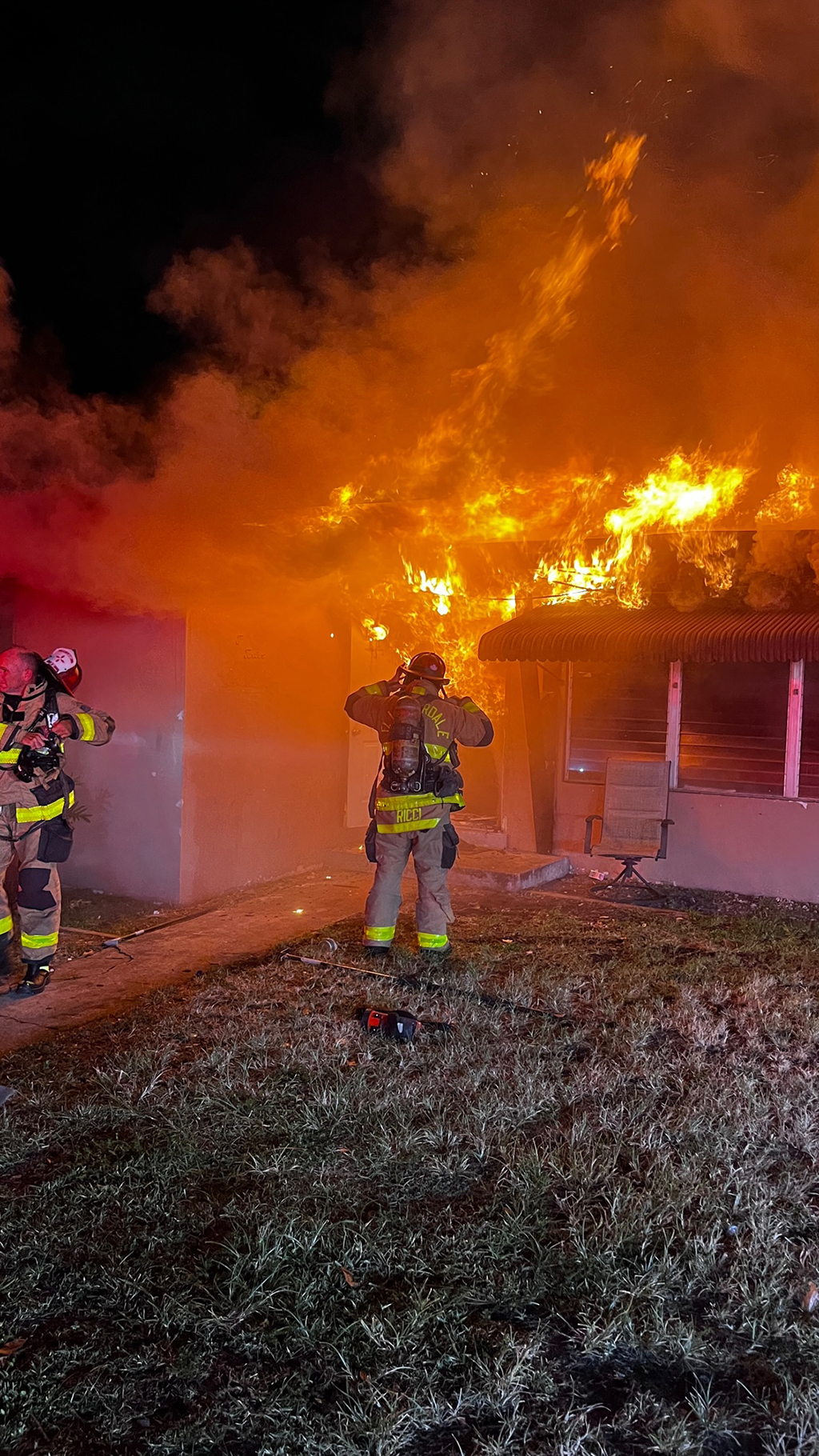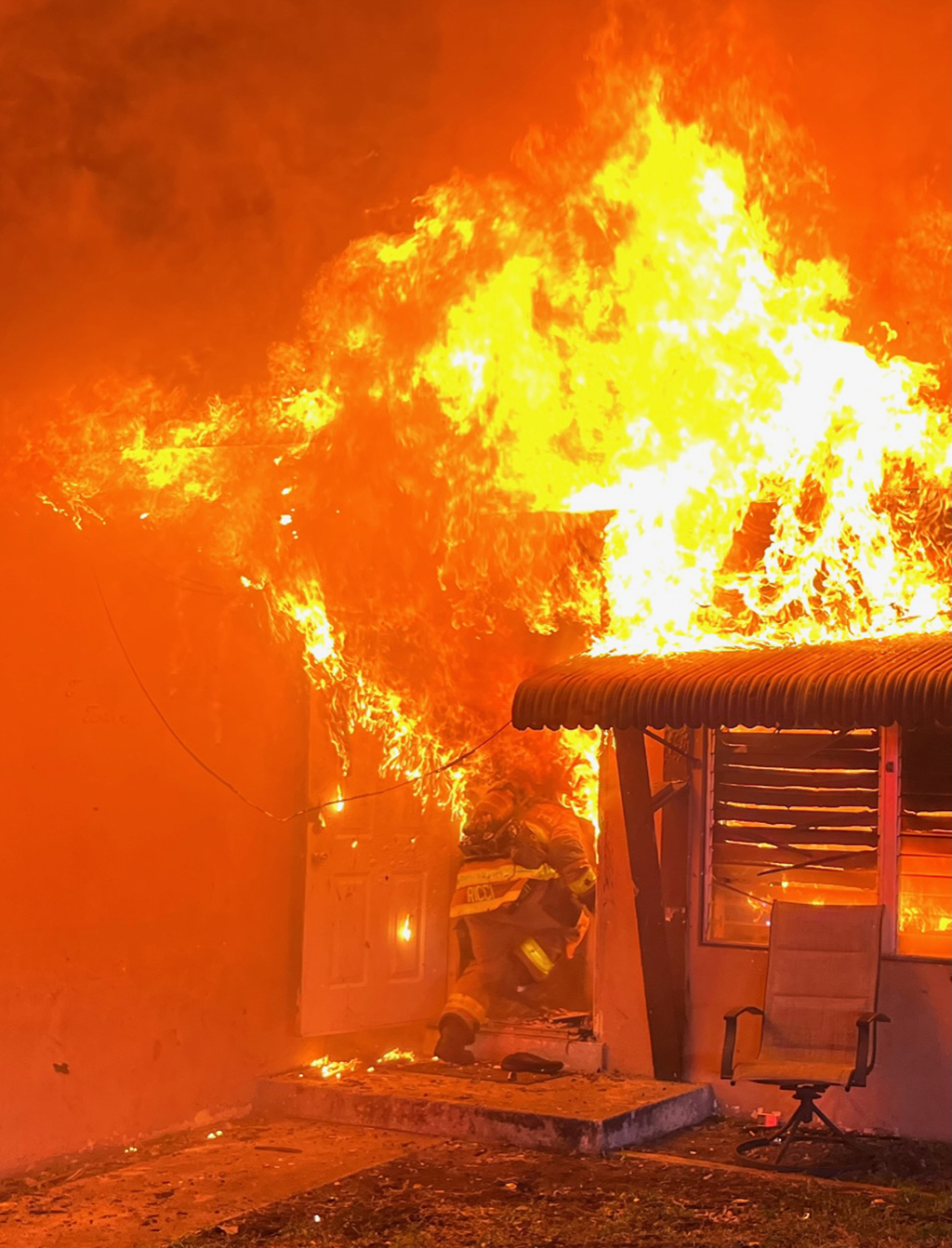What We Learned | By Robert Ricci
IN RECENT YEARS, we’ve heard phrases like “survivable space” and “survivability profile” used throughout the fire service. And although firefighters do need to pay attention to these topics, we need to also remember that they can’t solely dictate our actions on the fireground. The firefighting mission, at its core, is to save those who are unable to save themselves.
Survivable Space
When we talk about survivable space, we’re referring to the chance a human or animal has, without full firefighting personal protective equipment (PPE), of being able to live through the conditions of their current environment. While this is great for conversations at the kitchen table, we must not let this be the single variable in our decision-making process. The human body is amazing and resilient. It is also extremely fragile in cases of extreme settings, like high-temperature fires and heat. The reality is that prior to being burned, civilian occupants will not survive inhaling carbon monoxide and smoke.
Recent fire studies have taught us that we need to keep victims low to the floor and away from heat and poisonous smoke. And we need to remove them from the structure where we find them as quickly as possible. That may mean getting them through a bedroom window vs. dragging them through the area we just came through. And when we speak of survivable space, we must all be on the same page that our first concern is not about burning. It’s about suffocating.
Gear Limitations
One of the factors we must consider is what our structural PPE can handle. At 320°F, a radio will break down and become unusable. (This should be an argument to keep it under our coats, but that’s a topic for another day.) Our self-contained breathing apparatus (SCBA) face pieces will bubble and melt through at 536°F. This is the most important piece of information for us to remember. Our face piece is, arguably,our last line of defense in structure fires. Knowing its limitations can mean the difference between life and death.
Physical Readiness
We are part of a labor-intensive profession. So it makes sense that we’re often inundated with physical fitness standards, talks, and tests. Whether you are a career or volunteer firefighter, the tasks you’ll need to perform on the job will require a tremendous amount of strength, power, endurance, and overall work capacity.
As firefighters, we must remember that we don’t respond to an incident to survive. Our goal at an incident is to thrive in an unfavorable environment and perform as elite athletes and professionals due to our rigorous firefighting training.
Overall health and wellness need to be prioritized not only for the incidents but for the longevity of our careers and personal lives. The fitter you are, the longer it takes for the conditions to affect you and slow you down. This only comes with time, training skills, and heat acclimation to our PPE. Without this, we are just at a costume party surviving the incident.
Searchable … or Survivable?
Searchable. Survivable. These words are not interchangeable and shouldn’t be confused with one another.
We have one more incredibly important factor to consider: Is the space searchable? This question takes all previously mentioned considerations into account. It also includes the important step of performing a proper size-up. We always need to consider the answers to the following questions:
- Do you have the skill set and physical fitness level to search the space aggressively and efficiently?
- Will your gear hold up to the conditions in the space?
The combination of these factors will dictate whether the space is searchable. We must not write off civilians based on factors that we can’t measure on the spot, especially if the factor is our own limitations.
1212 NW 15th Street Fire
At approximately 0300 hours on Saturday, May 13, 2023, Florida’s Broward County communication center received a call with a report of a fire. Our crew, Fort Lauderdale (FL) Fire Department Engine Company 16, could clearly see a column of smoke in the distance.
We were unsure of what our arrival position would be, as this was toward the end of our first-due response zone. Arriving on scene as the third-due engine company not far behind the other companies, we assumed the task of the backup hoseline, per our fireground standard operating procedures for this single-family residence.
The first-arriving company had advised that a shed was on fire in the rear of the structure. This information led the first-due engine to commit the line to the C side of the structure. On our arrival, it was clear that it was not just a shed fire. The fire had communicated into the interior of the structure. We also learned that this was an assisted-living facility. As we stretched the backup line, we directed it into the A side of the house.
Members put on their SCBA, not knowing whether anyone was still inside. We faced heavy smoke conditions at the front door. While the nozzle firefighter awaited water in the line, I laid in the doorway with the thermal imaging camera (TIC) to look for life, fire, and layout (photo 1). As I scanned, I spotted a wheelchair through the lens of the TIC. It was about four feet inside the doorway, which confirmed that we could have disabled victims trapped inside.
 1. As we masked up, we realized getting under the thermal layers would allow a view inside the structure. (Photos by Battalion Chief Ken Rudominer.) 2
1. As we masked up, we realized getting under the thermal layers would allow a view inside the structure. (Photos by Battalion Chief Ken Rudominer.) 2
2. Exiting the structure with the wheelchair minimized obstructions for the engine company’s advance and for the truck company’s search efforts.

3. As Engine Company 16’s hoseline made a push into the structure, Ladder Company 2 searched the remaining area of the dwelling.
Entering the structure was my priority, based on the information provided. Once we were inside, I had to complete an immediate search around the chair.
I pulled it and realized it was empty. We removed the chair from the structure, as it would have prevented our advancement of the hoseline (photo 2). It also would have impeded search operations inside the dwelling.
The nozzle knocked back some of the fire, which allowed Ladder Company 2 to push in to the left of the structure. They quickly located and searched four bedrooms with more than 10 beds in them. As the truck searched, the backup line advanced in and extinguished the remaining fire inside the home (photo 3).
Go or No Go?
The choice of whether to go must be based on searchability. In the case of the 15th Street fire, the space was searchable. That search came back negative but complete. The ladder company made an aggressive push ahead of the line to search a clearly searchable space.
We will always face critics and Monday morning quarterbacks after a fire. Those who were not on scene must not dictate our actions. If a civilian was pulled out of that fire, we would have been hailed heroes. But since no one was there, some deemed us “reckless.”
After we performed a proper size-up of the fire conditions inside the structure and learned that this was an assisted-living facility, we searched the space. The only guarantee was that it is our job to save the helpless. We are here for them. That must remain at the forefront of our minds and our mission statements.
ENDNOTE
1 “The First 3,000 Rescues.” Firefighter Rescue Survey, 2022. bit.ly/3PFWnPk.
ROBERT RICCI is a captain and 16-year veteran of the Fort Lauderdale (FL) Fire Department. He is currently assigned to Engine Company 16. Ricci is a Florida Smoke Diver, certified fire instructor, and live fire training instructor. He teaches “Make Engines Great Again” at several fire conferences in Florida.


